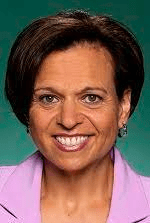In the wake of Cyclone Alfred, Queensland’s local government peak is calling for reliable state-wide digital coverage as a matter of urgency.

“Connectivity challenges can have a massive impact on a community’s liveability at the best of times, let alone during a natural disaster when the risk becomes extreme,” said Matt Burnett – president of the Local Government Association of Queensland.
“Reliable digital communication dramatically boosts a community’s ability to better prepare and then recover faster from natural disasters,” he added.
Queensland has experienced three severe weather events in as many months this year: the Western Queensland floods, the North Queensland floods and Cyclone Alfred.
The events “are just further illustrations of how desperately we need real government initiatives and funding to delete the digital divide once and for all, particularly in regional, rural and remote areas,” said Burnett.
Research conducted by LGAQ shows nine out of 10 Queensland communities will likely suffer a digital blackout when natural disasters strike.
The state’s 77 councils would like to see “immediate commitments from both sides of politics to address every connectivity black hole right throughout the state, no matter how remote,” LGAQ CEO Alison Smith said.
Many regional, rural and remote Queenslanders were being left behind because of outdated equipment as well as rapid technology change, added Smith. ”Continuous oversight” is needed to ensure such areas receive connectivity, she said.

Responding to last year’s regional telecommunications review, Minister for Communications Michelle Rowland recognised that Australia’s digital divide needed to be addressed.
“We heard loud and clear that telecommunications are essential for regional communities and that many experience inadequate service,” she said. “We heard that while there has been improved broadband in many areas, the mobile experience has become more challenging for many. It is clear significant disparities in connectivity remain, particularly in remote locations and among First Nations communities.”




Leave a Reply